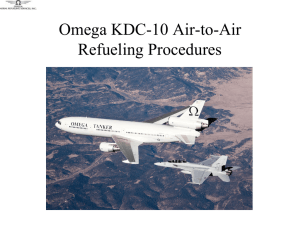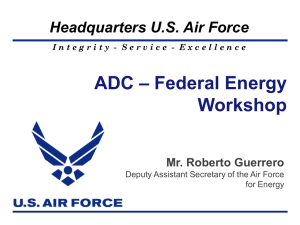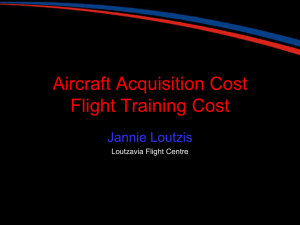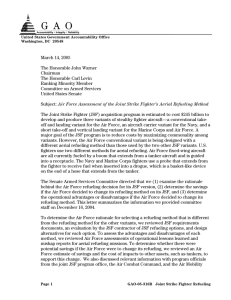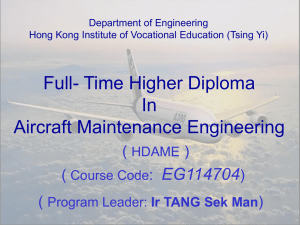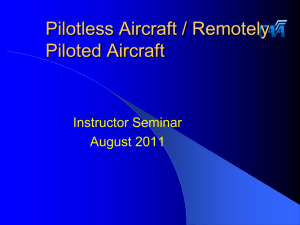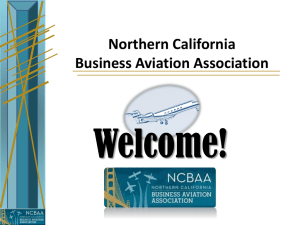MO Li
advertisement
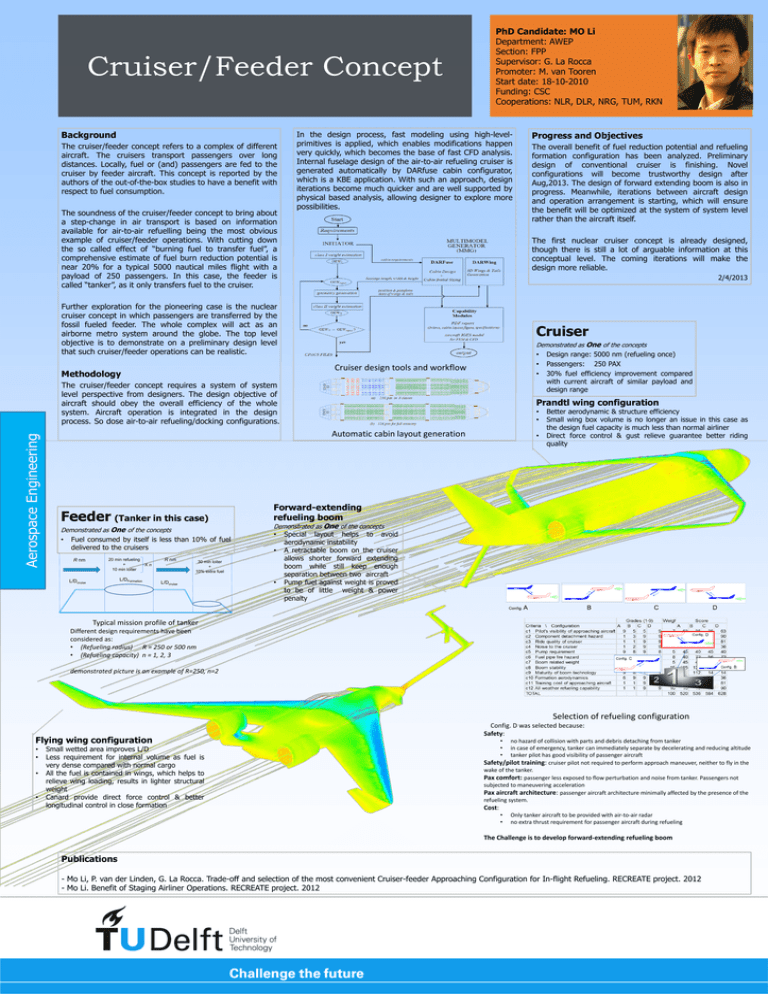
Cruiser/Feeder Concept Background The cruiser/feeder concept refers to a complex of different aircraft. The cruisers transport passengers over long distances. Locally, fuel or (and) passengers are fed to the cruiser by feeder aircraft. This concept is reported by the authors of the out-of-the-box studies to have a benefit with respect to fuel consumption. The soundness of the cruiser/feeder concept to bring about a step-change in air transport is based on information available for air-to-air refuelling being the most obvious example of cruiser/feeder operations. With cutting down the so called effect of “burning fuel to transfer fuel”, a comprehensive estimate of fuel burn reduction potential is near 20% for a typical 5000 nautical miles flight with a payload of 250 passengers. In this case, the feeder is called “tanker”, as it only transfers fuel to the cruiser. PhD Candidate: MO Li Department: AWEP Section: FPP Supervisor: G. La Rocca Promoter: M. van Tooren Start date: 18-10-2010 Funding: CSC Cooperations: NLR, DLR, NRG, TUM, RKN In the design process, fast modeling using high-levelprimitives is applied, which enables modifications happen very quickly, which becomes the base of fast CFD analysis. Internal fuselage design of the air-to-air refueling cruiser is generated automatically by DARfuse cabin configurator, which is a KBE application. With such an approach, design iterations become much quicker and are well supported by physical based analysis, allowing designer to explore more possibilities. 2/4/2013 Cruiser Demonstrated as One of the concepts • • • Cruiser design tools and workflow Aerospace Engineering The cruiser/feeder concept requires a system of system level perspective from designers. The design objective of aircraft should obey the overall efficiency of the whole system. Aircraft operation is integrated in the design process. So dose air-to-air refueling/docking configurations. Demonstrated as One of the concepts • Fuel consumed by itself is less than 10% of fuel delivered to the cruisers R nm 20 min refueling + 10 min loiter R nm Xn L/DFormation L/Dcruise • • • Better aerodynamic & structure efficiency Small wing box volume is no longer an issue in this case as the design fuel capacity is much less than normal airliner Direct force control & gust relieve guarantee better riding quality Forward-extending refueling boom Demonstrated as One of the concepts • • 30 min loiter + 10% extra fuel L/Dcruise Design range: 5000 nm (refueling once) Passengers: 250 PAX 30% fuel efficiency improvement compared with current aircraft of similar payload and design range Prandtl wing configuration Automatic cabin layout generation Feeder (Tanker in this case) The overall benefit of fuel reduction potential and refueling formation configuration has been analyzed. Preliminary design of conventional cruiser is finishing. Novel configurations will become trustworthy design after Aug,2013. The design of forward extending boom is also in progress. Meanwhile, iterations between aircraft design and operation arrangement is starting, which will ensure the benefit will be optimized at the system of system level rather than the aircraft itself. The first nuclear cruiser concept is already designed, though there is still a lot of arguable information at this conceptual level. The coming iterations will make the design more reliable. Further exploration for the pioneering case is the nuclear cruiser concept in which passengers are transferred by the fossil fueled feeder. The whole complex will act as an airborne metro system around the globe. The top level objective is to demonstrate on a preliminary design level that such cruiser/feeder operations can be realistic. Methodology Progress and Objectives • Special layout helps to avoid aerodynamic instability A retractable boom on the cruiser allows shorter forward extending boom while still keep enough separation between two aircraft Pump fuel against weight is proved to be of little weight & power penalty Typical mission profile of tanker Different design requirements have been considered as: • (Refueling radius) R = 250 or 500 nm • (Refueling capacity) n = 1, 2, 3 demonstrated picture is an example of R=250, n=2 Selection of refueling configuration Flying wing configuration • • • • Small wetted area improves L/D Less requirement for internal volume as fuel is very dense compared with normal cargo All the fuel is contained in wings, which helps to relieve wing loading, results in lighter structural weight Canard provide direct force control & better longitudinal control in close formation Config. D was selected because: Safety: • • • no hazard of collision with parts and debris detaching from tanker in case of emergency, tanker can immediately separate by decelerating and reducing altitude tanker pilot has good visibility of passenger aircraft Safety/pilot training: cruiser pilot not required to perform approach maneuver, neither to fly in the wake of the tanker. Pax comfort: passenger less exposed to flow perturbation and noise from tanker. Passengers not subjected to maneuvering acceleration Pax aircraft architecture: passenger aircraft architecture minimally affected by the presence of the refueling system. Cost: • • Only tanker aircraft to be provided with air-to-air radar no extra thrust requirement for passenger aircraft during refueling The Challenge is to develop forward-extending refueling boom Publications - Mo Li, P. van der Linden, G. La Rocca. Trade-off and selection of the most convenient Cruiser-feeder Approaching Configuration for In-flight Refueling. RECREATE project. 2012 - Mo Li. Benefit of Staging Airliner Operations. RECREATE project. 2012
